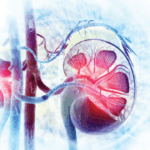
A fascinating area of nutritional supplementation with a well-documented history has suddenly entered a renaissance. The "Elemental Diet" (ED) is an intriguing way of enhancing gastrointestinal tract (gut) health, nutritionally supporting the body, and reducing food reactions.
Its application in one form or the other often leads to an improvement in gut health with far-reaching impacts on chronic symptoms and general good health.
It is a fact that EDs have been around for over 50 years, yet few recognize what they are and how they apply when restoring health. A review of the scientific literature reveals impressive data validating the use of EDs for the dietary management of patients with limited or impaired capacity to digest, absorb and/or metabolize foods. Initial results were related to Crohn’s disease (CD) and inflammatory bowel disorders (IBD), but evidence now suggests that EDs can help with small intestinal bacterial overgrowth (SIBO), irritable bowel syndrome (IBS), and much more.
A study appearing in the Journal of Pediatric Gastroenterology and Nutrition showed that an elemental diet was as effective as corticosteroids in treating children with acute CD. Interestingly, despite data and support literature, very few health professionals suggest this type of diet for such conditions. One possible reason has been the relative unpalatability of EDs, resulting in poor compliance. To resolve this issue, a new ED has been formulated, and its excellent taste profile offers consumers an important tool in their quest for optimal health.
What is an Elemental Diet
As the name suggests, an ED is a “basic” medical food that contains all the daily recommended allowances for essential fatty acids, vitamins, minerals, and other nutrients required by the body for optimal physiological functioning. You can look at an ED much like a meal replacement for the day, with one major distinguishing characteristic: it has no whole proteins, featuring instead pure, free-form amino acids. These amino acids allow nutrients to be absorbed into the blood stream within the first two feet of the small intestine, bypassing interactions with the rest of the digestive tract.
The Advantages of an Elemental Diet
- There is no digestion necessary, since the ED is immediately absorbed into the blood.
- It does not feed bacteria into the small intestine, which reduces symptoms such as gas and bloating, which in turn contribute to SIBO and IBS.
- Because there are no proteins and thus no antigen reactions, overall sensitivities and reactions are reduced.
- It gives the gut rest and conserves energy.
One way of looking at an ED is to think of it as intermittent fasting without the fasting. You get the same benefits of resting the gut that you get during fasting, but you don’t fast! As an added bonus, you get high-level nutrition to support your body’s physiological needs.
Benefits of an Elemental Diet
Our understanding of the gut has changed significantly over the last two decades. We now know that a healthy gut can have far-reaching impacts on systemic health, influencing our immune system, our nervous system and even metabolism itself. We have learned that the gut-blood barrier is only one cell thick and disrupting it can generate increased gut permeability (leaky gut), possibly leading to autoimmune disorders and other complications. An ED allows the gut to rest, restore balance, and recover.
In addition to treating CD better than corticosteroids, recent studies have shown that EDs can improve immunoglobulin levels, eradicate pathogenic gut bacteria better than antimicrobials, and even have an effect on rheumatoid arthritis.
The newest uses of ED treatment involve SIBO and IBS. Such conditions are diagnosed by their symptoms, but also by an objective testing procedure called lactulose breath test (LBT). Lactulose is a sugar so big that it can travel through the entire small intestine without being digested. In testing, patients are given a dose of lactulose, which is then consumed by gut bacteria, producing gases that can include hydrogen and methane (depending on the type and quantity of bacteria). By collecting breath samples over time and analyzing them, health professionals are able to confirm or rule out SIBO. For SIBO and IBS patients, the value of an ED is that it has been found to normalize LBT breath-test readings, indicating a reduction in, or even eradication of, gut bacteria. Indeed, Dr. Mark Pimental’s groundbreaking 2004 study in Digestive Diseases and Sciences showed that 80% of the 93 patients placed on an ED had been effectively treated for their SIBO and IBS conditions.
It was Dr. Pimental’s study that revived interest in the ED as a useful tool in gut recovery. Discussions around his work led to a better understanding of how the diet works and its breadth of clinical applications. Although we still haven’t fully determined all the ways through which the ED improves gut health, we do have scientific data that support conclusions as to its key mechanisms and actions.
An Elemental Diet (ED)…
- Reduces production of gastric acid, pancreatic enzymes and bile, all leading to less epithelial cell loss and a reduction in intestinal permeability (leaky gut).
- Inhibits production of free radicals.
- Decreases antigenicity due to the fact that the product is free of whole proteins.
- Improves microbiome composition, as shown by the LBT.
- Decreases malabsorption, probably due to the improvement in the composition of the microbiome.
- Decreases the inflammatory response.
- Stimulates the migrating motor complex (MMC), a key to moving bacteria out of the small intestine and into the colon. This mechanism reduces the likelihood of experiencing gas/ bloating after meals.
- Reduces pathogenic bacteria.
Beginning an Elemental Diet
So, how does one take an ED? For this article we will break down the ED into two types:
Full Elemental Diet:
Replaces all meals for up to 14 days for the normalization of the LBT test in the treatment of SIBO. (IMPORTANT NOTE: This is to be prescribed and used ONLY under the supervision of a health professional.) Under this plan, the approximately 1,800-calorie ED becomes the patient’s sole source of nutrition for 14 days or, at a health professional’s discretion, longer. The purpose of this regimen is to starve and push bacteria out of the small intestine so they can move to their proper location during digestion, which is the colon. The patient will usually be instructed to take approximately 200–300 calorie servings every two to three hours until caloric requirements are met. The servings should be spread over a 30-minute period to avoid any spikes in blood sugar due to its rapid absorption into the circulatory system.
Half Elemental Diet:
Can be used by patients in replacing one meal each day for 7–14 days. The “Half ED” is defined as patients consuming 50% of daily caloric needs from ED, and the other 50% from whole foods. Half or partial EDs have been used and studied clinically to help maintain remission of CD. They can also be used when compliance becomes difficult for patients on full EDs for SIBO and IBS. However, because the half or partial ED is so simple to use it can be employed to improve the gut, potentially achieving a number of systemic health goals.
I often instruct my patients to replace one meal each day (lunch or dinner) with an ED, as this offers sufficient rest for the gut. As I mentioned earlier, this pattern essentially becomes intermittent fasting without the fasting. A partial ED can help reduce antigenicity and inflammation, help trigger the MMC (moving bacteria out of the small intestine), improve energy production, and enhance nutrition systemically.
I recommend a week’s trial on an ED, just as I would for someone considering an intermittent fasting regimen. What’s important is how the ED makes you feel. Are you achieving the outcome you and your health professional desire? If so, ED can become an important new tool in your quest for optimal health.
Conclusion:
My goal in this article has been to provide information on a long-known clinical tool, one that is over 50 years old, but recently showing new promise and application – especially for those suffering with SIBO or IBS. Now that you’ve gained an understanding of what an ED is, and how it can work to improve gut health and reduce the symptoms of chronic disease caused by an unhealthy gut, you’re free to take it up with your health professional. Could a half ED – or even a well-supervised full ED be right for you?











